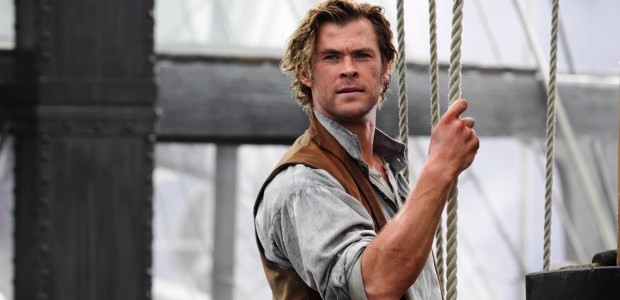Based on the non-fiction novel of the same name by Nathaniel Philbrick, In the Heart of the Sea is a semi-biographical film that, in theory, has all the makings of an epic action-adventure. Narratively, the film is a layered account of the Essex Tragedy – an 1820 whaling expedition that went horribly wrong. 30 years later it served as the inspiration for Herman Melville’s Moby-Dick, a loosely based account of that tragedy that told of a devastating encounter with an enraged sperm whale.
Philbrick’s adaptation, by director Ron Howard’s longtime scripting cohorts Rick Jaffa and Amanda Silver, is a similar story but with certain alarming accuracies that remained unauthenticated till 1980. The setting is 1820 Nantucket, Massachusetts, where whale oil is a booming business (this was almost a century before crude oil was discovered). Famed whaling ship – the Essex – is commissioned to bring back 2000 barrels of whale oil, with the assurance that first mate Owen Chase (Chris Hemsworth) will be promoted to skipper on his next voyage. But even before they set sail, tensions rise between Chase and Captain George Pollard (Benjamin Walker), whose only qualification is his privileged family name. Between ego bashing and bad navigational decisions, disaster strikes when the Essex encounters a mammoth sperm whale with what appears to be a bad case of premediated ferocity. What happens next is history but the aftermath of the attack leads to an unthinkable and horrific revelation that even Melville left out in Moby-Dick.
With a pedigree for films where characters struggle against a grandiose backdrop, Howard’s In the Heart of the Sea is a dramatic retelling of a classic tale of man versus nature. Or so it seems at first glance. Strategically released close to the upcoming awards season, the film is a visual spectacle worthy of the big screen, but this time, it’s not just the characters we find struggling. As a screen adaptation, the film struggles with an identity crisis. At no point are we certain whether this film is an action-adventure about man versus a mythical beast, or a harrowing tale of survival pitting man against nature, or whether it’s meant to be a philosophical probe into the darkest recesses of the human soul. What’s certain is the somber tone throughout the narrative given the tragic subject matter. Even so, none of the characters are allowed any depth or emotional engagement. Even the whale, labeled by the crew as “a demon” isn’t remotely terrifying for a creature believed to be inexplicably hostile.
Despite these reservations, and to its merit, the film is intricately crafted in visual aesthetics. From the physical transformation of actors (they were restricted to a 500 calorie daily diet to depict starvation) to the production design, there’s plenty of attention to detail. Having previously worked with Howard and Hemsworth in Rush, cinematography from Anthony Dod Mantle is equally breathtaking. At times it feels experimental, but Mantle’s camera work is kinetic and gripping with some immersive tracking shots of whales diving deep. It’s a pity though that the film itself isn’t nearly as ambitious as its source material. For Howard, this film might seem like another fantastic voyage but in reality, it’s an endless sea with hardly any heart.
Rating: 




